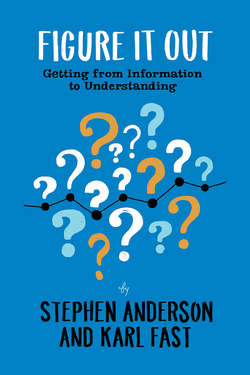Читать книгу Figure It Out - Stephen P. Anderson - Страница 60
На сайте Литреса книга снята с продажи.
FACT OR FICTION, IT DOESN’T MATTER
ОглавлениеSo then, stories arouse attention by invoking more areas of the brain. Got it. Here’s where things get really interesting. Whether we are in the moment, or watching a movie, the same specific regions of our brain light up in these fMRI studies. I could be walking in the rain, or simply reading about a walk in the rain—it doesn’t make a difference; the very same areas of the brain are stimulated. The degree of intensity is less with these imagined situations, but researchers observe the same neural changes whether you read about something or actually do that something.
This has been noted in studies involving smell, texture, motor movement, and more. Most of the studies focus on single words; more recent studies have had subjects read passages from a story. In these cases, someone may read about eating breakfast, or actually eat breakfast—the same areas of the brain are activated. The studies conclude that “readers understand a story by simulating the events in the story world and updating their simulation when features of that world change.”18
Where this is more interesting is when people are involved. There seems to be a significant overlap between the regions of the brain associated with narrative comprehension and the regions associated with social cognition.19 In a quantitative meta-analysis of neuroimaging studies pertaining to theory of mind (the ability to infer the mental states of others), Raymond Mar, a psychologist at York University in Canada, found that the core networks involved with trying to figure out the thoughts and feelings of others were also activated by stories.
This might lead us to conclude, as did The New York Times article “Your Brain on Fiction,” that:
There is evidence that just as the brain responds to depictions of smells and textures and movements as if they were the real thing, so it treats the interactions among fictional characters as something like real-life social encounters.20
Given this information, when an expert on stories such as Lisa Cron remarks (in her TEDx talk) that “You’re not just reading about Jane Eyre. You Are Jane Eyre ...,” she’s right, cognitively speaking. If we conclude that it is a thin line between a lived experience and being present in a story, then all stories become worthy of serious consideration. This only strengthens the notion that stories shape who we are. And they’re a powerful way to manage the cost of understanding, whether used as a lens to view some information, or used to develop the social bonds needed to bring people together, to figure something out.
Seeming to support this assertion, research led by Dr. Keith Oatley, a professor emeritus of the University of Toronto Department of Applied Psychology and Human Development, has found that reading fiction increases empathy.21 Through fictional stories, we improve our ability to understand other people, empathize with them, and imagine ourselves in another’s situation. If we connect what we see with regions of the brain lighting up during reading, with the previous comments on narratives as a survival mechanism, then reading fiction allows us to safely explore different kinds of social interactions. Research in this direction quickly veers back to discussions of theory of mind, which, to offer up a more precise explanation, is “the ability to attribute mental states—beliefs, intents, desires, emotions, knowledge, etc.—to oneself, and to others, and to understand that others have beliefs, desires, intentions, and perspectives that are different from one’s own.” Theory of mind is, as you’d expect, critical to everyday human social interactions.
Which is a nice transition to the more recent argument for why stories are so powerful: It’s all about the characters.
